A gorgeous addition to any landscape, baby blue flowers convey a sense of peace and grace. Gardeners love these colors because of their ability to turn outdoor areas into tranquil havens.
These blooms offer a lovely variety that gives depth and character to your environment, from the delicate Forget-Me-Nots to the mesmerizing Azure Aster.
We’ll explore the beauty and allure of baby blue flowers in this exploration, showing you how their calming hues and elegant presence can improve your landscape.
Different Types of Baby Blue Flowers
Sky Blue Lobelia
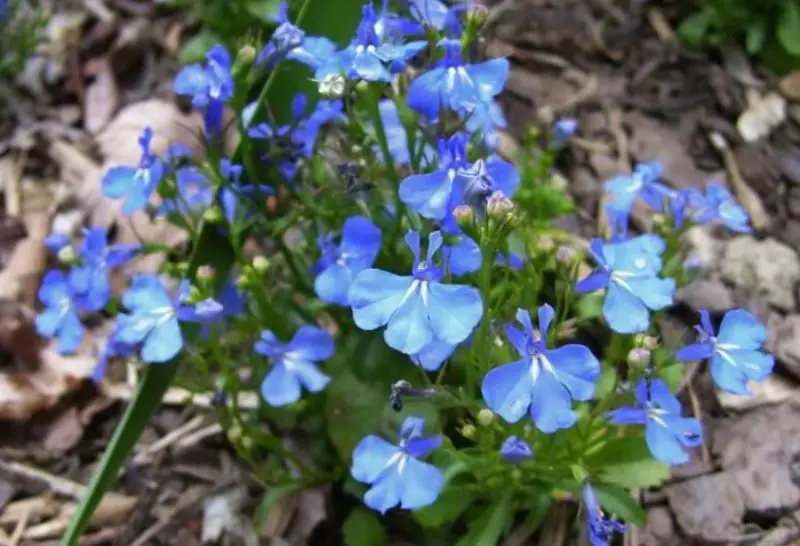
Sky Blue Lobelia (Lobelia erinus) is a heat-tolerant plant that produces cascading clusters of soft-blue, tiny blooms from spring through to the first frost. Its ability to thrive in warm weather makes it an excellent choice for gardens in warmer climates.
With its delicate and continuous display of baby blue flowers, Sky Blue Lobelia adds a refreshing touch to any landscape.
The plant’s long blooming season and resilience make it one of the best baby blue flowers you can grow, offering beauty throughout the year.
Veronica Georgia Blue

Veronica Georgia Blue (Veronica umbrosa ‘Georgia Blue’) is a stunning perennial closely related to the speedwell. Thriving in full sun, it showcases enchanting blue blooms throughout the spring, adding vibrant color to your garden.
With a spread of 1 to 2 feet, this plant makes an excellent ground cover option, perfect for filling in spaces with its lush foliage and beautiful flowers.
Its low-maintenance nature and striking appearance make Veronica Georgia Blue a great choice for gardeners looking to enhance their landscape with effortless beauty.
Jack Frost Siberian Bugloss
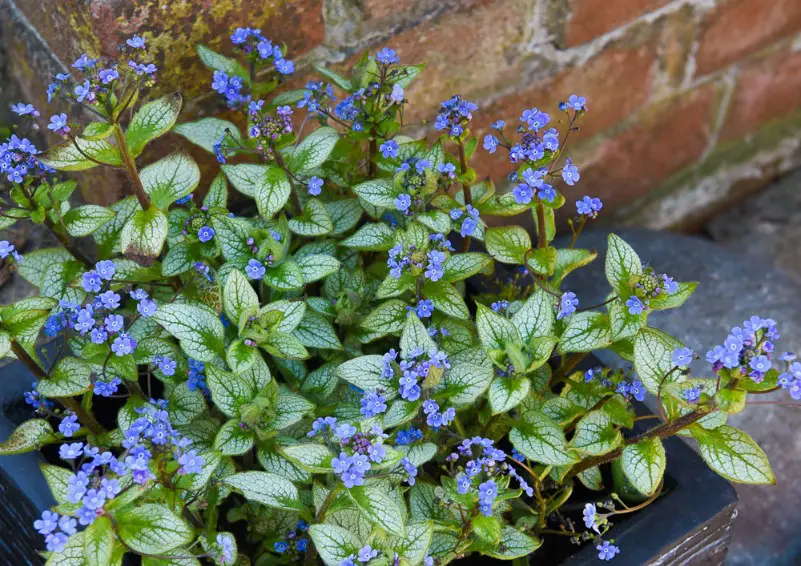
Jack Frost Siberian Bugloss (Brunnera macrophylla ‘Jack Frost’), also known as heartleaf brunnera, is a stunning shade-loving plant. It is cherished not only for its delicate sprays of tiny baby blue flowers that bloom in spring but also for its attractive, silver-veined foliage.
This picturesque perennial brings charm to any shaded garden, making it one of the best baby blue flowers you can grow.
Its unique leaves and soft blue blooms create a striking contrast, adding texture and beauty to your garden.
Cape Town Blue Felicia Daisy

Cape Town Blue Felicia Daisy (Felicia amelloides ‘Cape Town Blue’) is a compact, vibrant plant featuring celestial sky-blue petals surrounding bright yellow centers. This cheerful daisy blooms from summer through fall, maintaining its beauty even without deadheading spent flowers.
Its long-lasting color and low-maintenance nature make it an excellent choice for adding a bright, lively touch to any garden.
The contrasting blue and yellow flowers create a striking display, ensuring the Felicia Daisy remains a standout throughout its blooming season.
Glory of the Snow
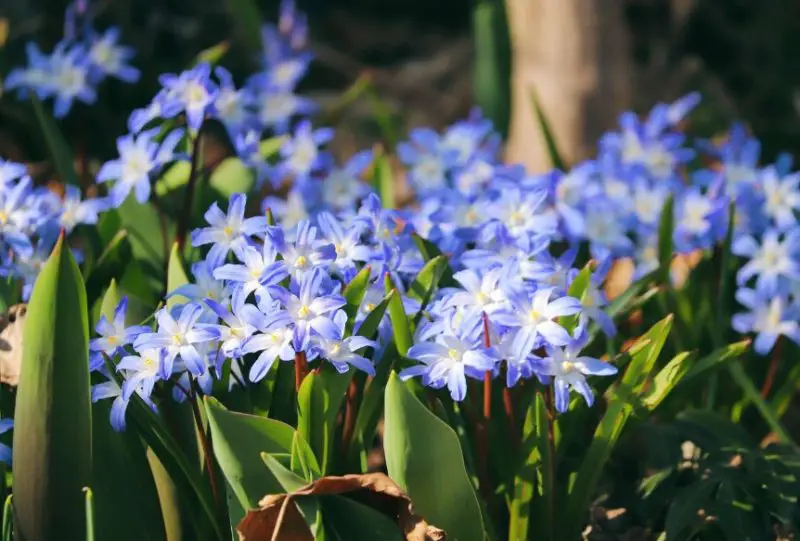
Glory of the Snow (Chionodoxa luciliae) is a beautiful early spring bloomer that adorns gardens with delicate blue flowers. These charming blossoms emerge just as winter fades, adding a splash of color to the landscape.
Known for spreading quickly, it’s best to plant them in well-defined spaces, such as along sidewalks or borders, to control their growth.
With its rapid spread and stunning blooms, Glory of the Snow is one of the best baby blue flowers you can grow, offering a lovely, low-maintenance option for early-season color.
Fuseables Pleasantly Blue Petunia
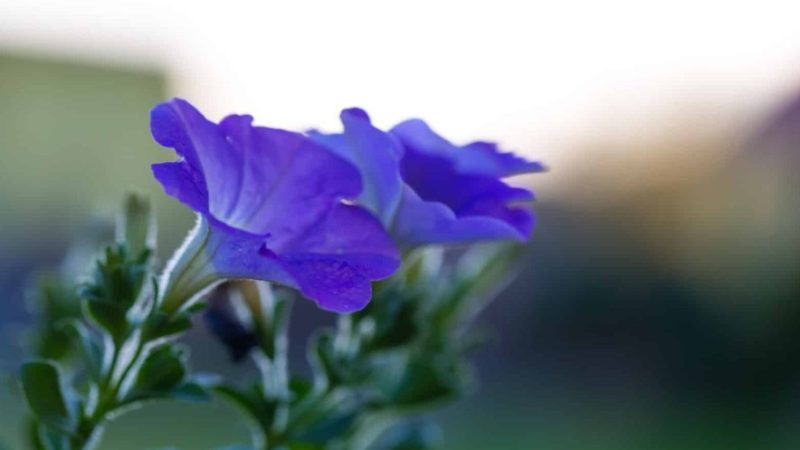
Fuseables Pleasantly Blue Petunia (Petunia x hybrida ‘Fuseables Pleasantly’) features light blue to lavender-hued, ruffled flowers adorned with dark blue veins. This annual plant adds a soft yet striking touch to any garden, growing up to 10-15 inches tall and spreading 10-12 inches wide.
Its unique combination of hues and textured blooms makes it a beautiful choice for flower beds, containers, or borders.
With its compact size and eye-catching colors, Fuseables Pleasantly Blue Petunia is an excellent addition for those looking to enhance their garden with subtle blue tones.
Great Blue Lobelia
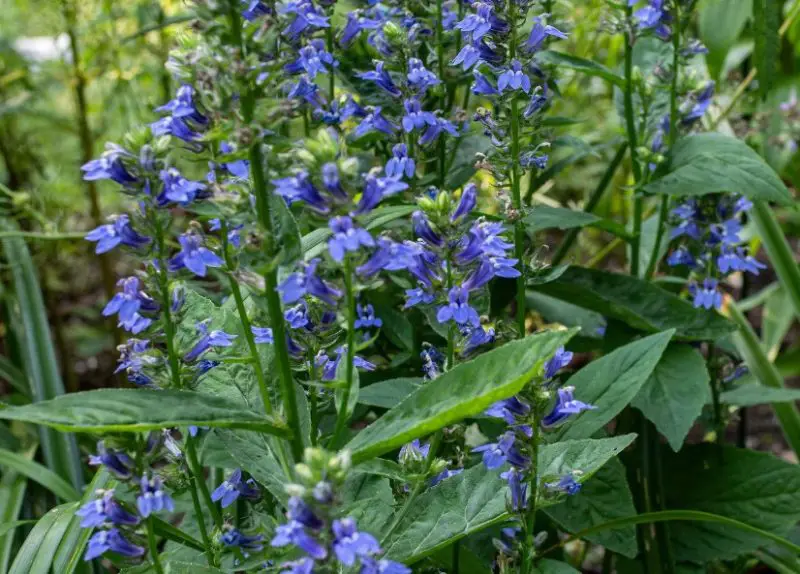
Great Blue Lobelia (Lobelia siphilitica) is admired for its long-lasting spikes of bright blue blooms that stand tall above finely-toothed, lance-shaped leaves. This North American native thrives in late summer gardens, adding striking color as other plants fade.
Its hardy nature and vibrant flowers make it one of the best baby blue flowers you can grow. Perfect for moist areas or woodland gardens, Great Blue Lobelia creates a stunning display that draws attention and attracts pollinators throughout its blooming season.
Azure Aster

Azure Aster (Symphyotrichum oolentangiense, syn. Aster azureus) features stunning, daisy-like blue flowers that are a true sight to behold, blooming from late summer until the first frost. These vibrant blossoms add a burst of color to any garden, attracting pollinators and enhancing the landscape.
When planting Azure Asters, it is advisable to use seeds rather than harvesting wild plants, as this practice can harm the species and hinder its ability to thrive.
Forget-Me-Nots
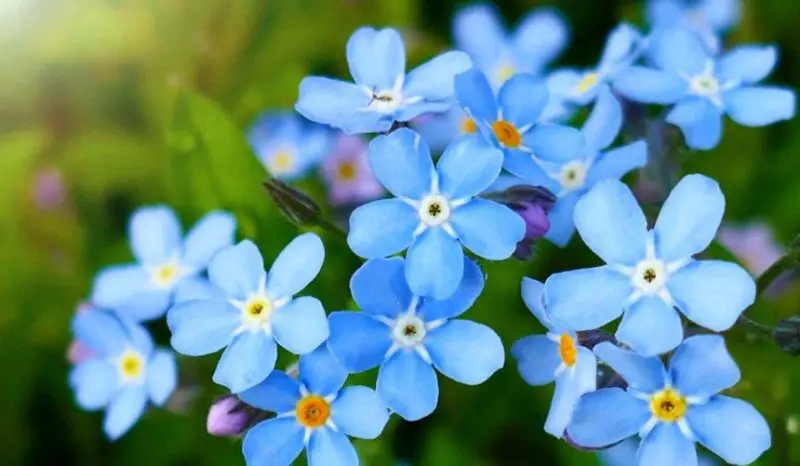
Forget-Me-Nots (Myosotis scorpioides) are one of the best baby blue flowers to grow, especially during summer. These delicate, sky-blue blossoms appear surrounded by vibrant green foliage, creating a striking contrast.
Their tiny centers come in shades of white, pink, or yellow, adding subtle variety to their appearance. Forget-Me-Nots are loved for their beauty and simplicity, making them a popular choice for gardens.
Hydrangea
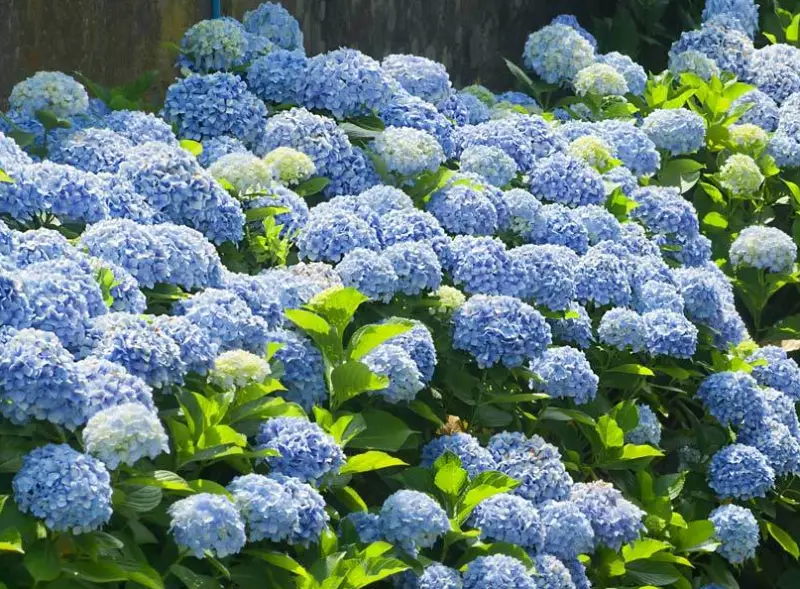
Hydrangea (Hydrangea macrophylla) is one of the top choices for baby blue flowers, ideal for brightening up your garden. These large, sky-blue blooms are composed of many smaller individual flowers, creating a stunning visual impact.
With their bold and elegant appearance, hydrangeas make a striking addition to any outdoor space. Their lush, round flower heads and vibrant colors can enhance the beauty of your garden, offering both charm and grandeur throughout the season.
If you’re looking for an eye-catching flower, Hydrangea is a perfect option.
Rapido Blue Bellflower
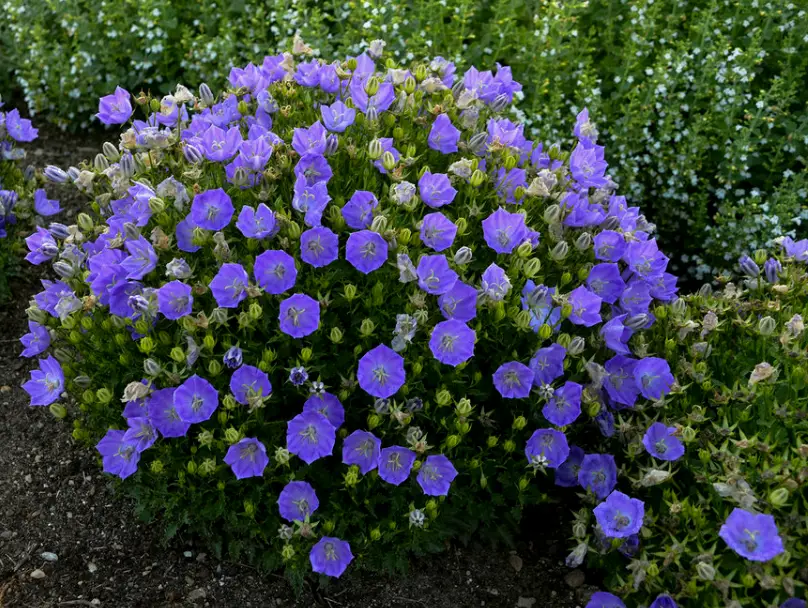
Rapido Blue Bellflower (Campanula carpatica ‘Rapido Blue’) is a top choice for baby blue flowers, especially for adding color to your garden in the spring.
This low-growing perennial plant is covered with vibrant, bell-shaped blooms in a stunning blue shade.
The flowers create a beautiful carpet of color that lasts well into the summer, making it an excellent option for extended seasonal beauty.
Dwarf Morning Glory
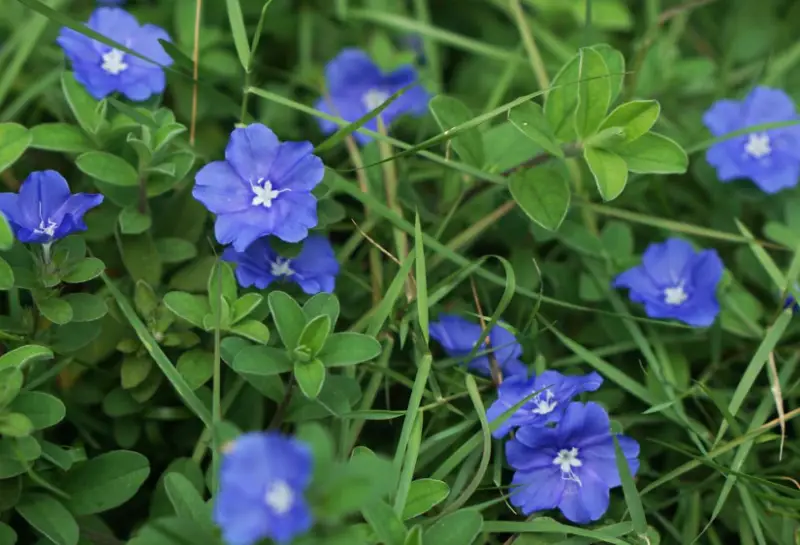
Dwarf Morning Glory (Evolvulus alsinoides) is a beautiful, non-vining plant with delicate true-blue blooms that brighten your garden from early summer until the first frost. Its compact nature, spreading no more than two feet, makes it an excellent choice for smaller spaces.
This plant offers continuous color throughout the warmer months, with its vibrant blue flowers adding charm and elegance.
Dwarf Morning Glory is perfect for gardeners looking for a low-maintenance, space-efficient option that still delivers stunning visual impact all season long.
Bird-Bill Dayflower

Bird-Bill Dayflower (Commeline dianthifolia) is a beautiful plant known for its striking blue flowers, which earn it a special place in your backyard.
This unique plant features blooms that open in the morning and close by noon, showcasing a daily display of color. The flowers consist of three petals that resemble mouse ears, adding to their charm.
With its captivating appearance and easy care, Bird-Bill Dayflower is considered one of the best baby blue flowers you can grow, providing a delightful touch of blue to your landscape.
Blue Star
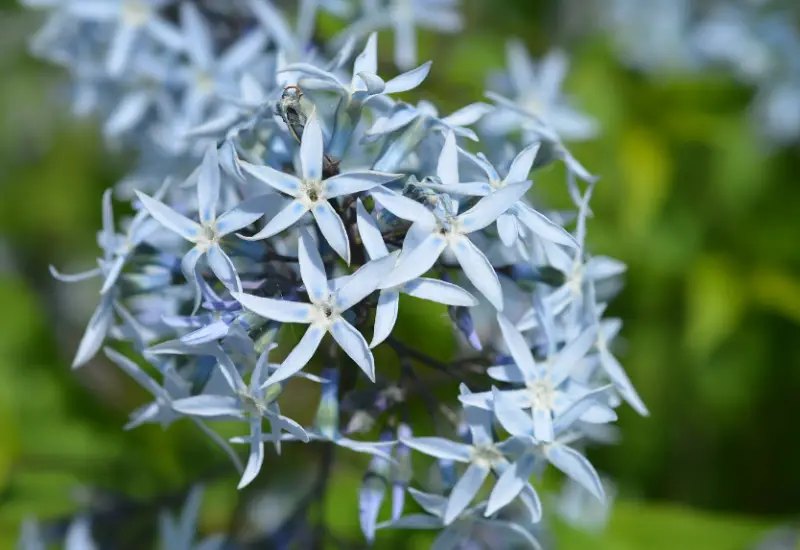
Blue Star (Amsonia tabernaemontana) is a delicate herbaceous perennial that features beautiful pale blue star-shaped flowers, making it an enchanting addition to your yard.
This plant thrives in moderately moist, well-drained soil but is also resilient enough to withstand periods of drought. Its lovely blooms appear in the spring, adding a soft touch of blue to the landscape.
With its graceful appearance and adaptability, Blue Star is a fantastic choice for gardeners looking to incorporate charming blue flowers into their outdoor spaces.
Blue Violet

The beautiful plant known as Blue Violet (Viola sororia) is edible and has purple-blue blossoms that brighten any garden. Its exquisite white-throated blue flowers are complemented beautifully by its heart-shaped leaves, which make for an eye-catching sight.
Blue violet is among the greatest baby blue flowers you can grow, and it’s well-known for being resilient and adaptable.
Chicory
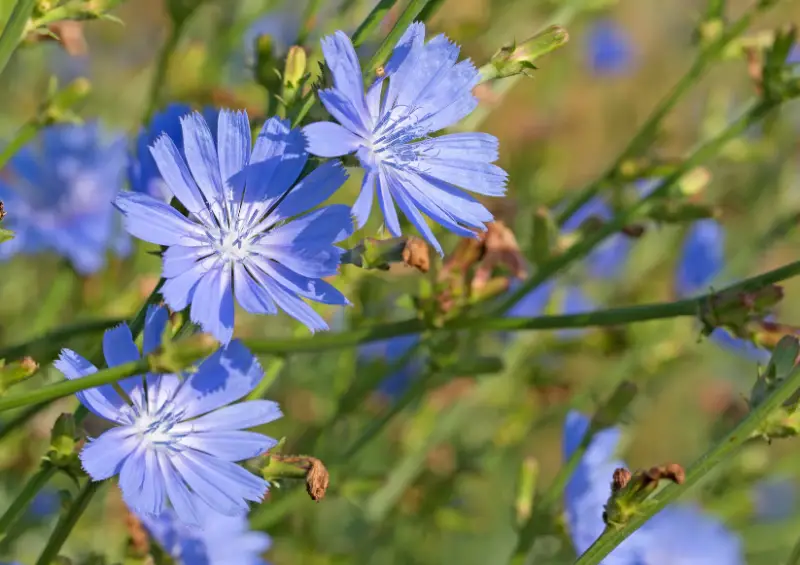
Chicory (Cichorium intybus) is an annual or biennial plant that produces striking blue flowers. While often considered a weed, many gardeners grow it for its beauty.
The blue blooms open in the morning and close later in the day, adding a fleeting but lovely splash of color to the landscape. Despite its wild nature, Chicory is appreciated for its delicate, vibrant flowers, making it an unexpected but charming addition to your backyard.
Desert Bluebells
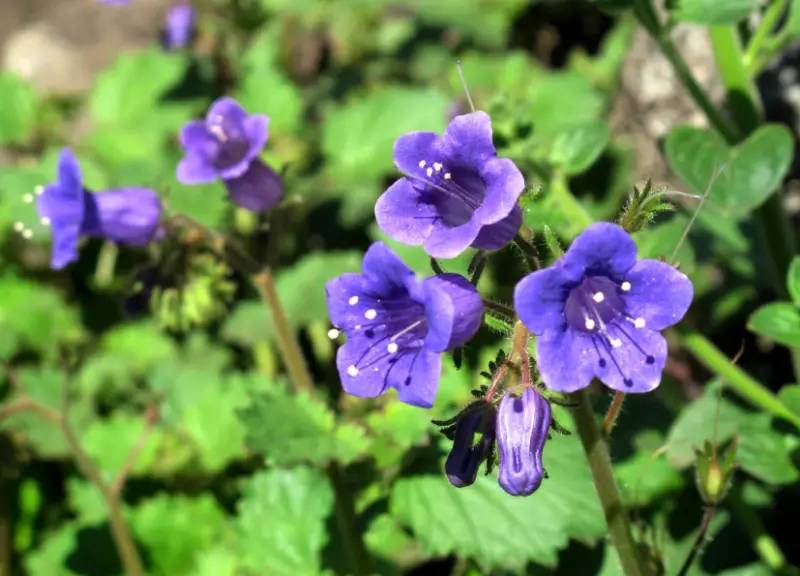
Desert Bluebells (Phacelia campanularia) are captivating flowers that thrive in the arid soils of California deserts. These beautiful blue blooms are highly attractive to bumblebees, making them an excellent choice for pollinator-friendly gardens.
Their vibrant color and adaptability to dry conditions make them one of the best baby blue flowers you can grow. Desert Bluebells add a stunning burst of blue to any landscape, making them a favorite for gardeners in warm, dry climates.
Empire Blue Butterfly Bush
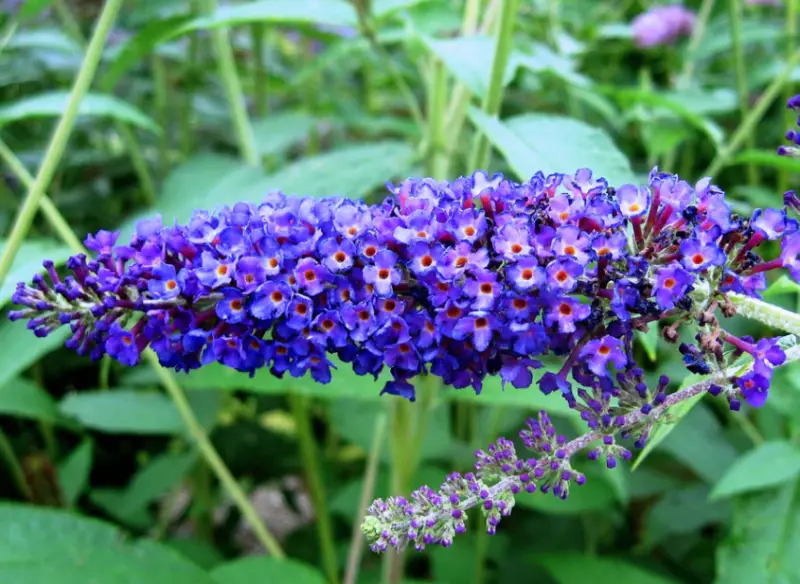
Empire Blue Butterfly Bush (Buddleja davidii ‘Empire Blue’) is an intriguing plant that produces clusters of purple-blue flowers with striking bright orange centers. Known for attracting butterflies and hummingbirds, it adds both beauty and wildlife to your garden.
Blooming from midsummer to mid-fall, this plant offers a long season of colorful, fragrant flowers. Its ability to draw pollinators makes the Empire Blue Butterfly Bush a popular choice for gardeners seeking both vibrant blooms and a lively garden atmosphere.
Fairy Thimbles
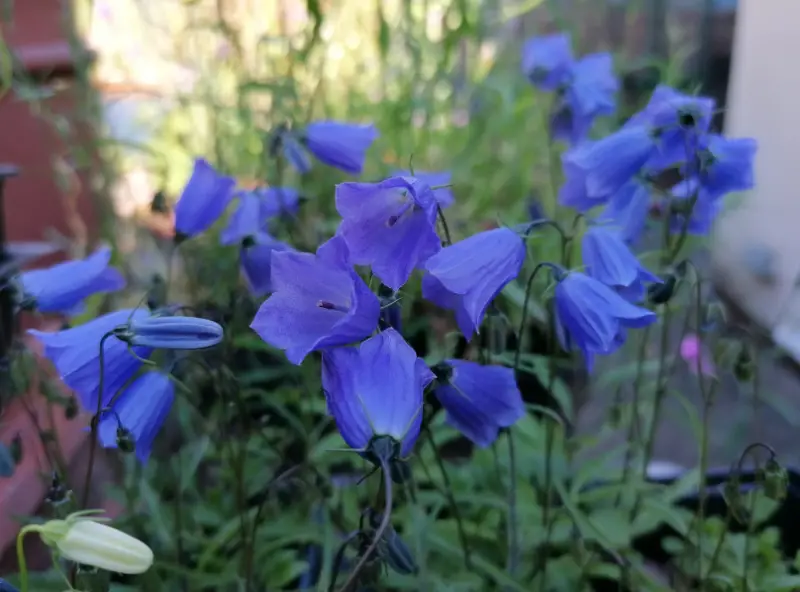
Fairy Thimbles (Campanula cochlearifolia) are enchanting plants that produce delicate spikes of charming lavender-blue flowers that gracefully sway in the wind. Thriving in full sun or partial shade, these diminutive blooms bring a whimsical touch to any garden.
Their elegant appearance and adaptability make Fairy Thimbles one of the best baby blue flowers you can grow, adding both beauty and movement to garden beds and borders.
Poppy Anemone
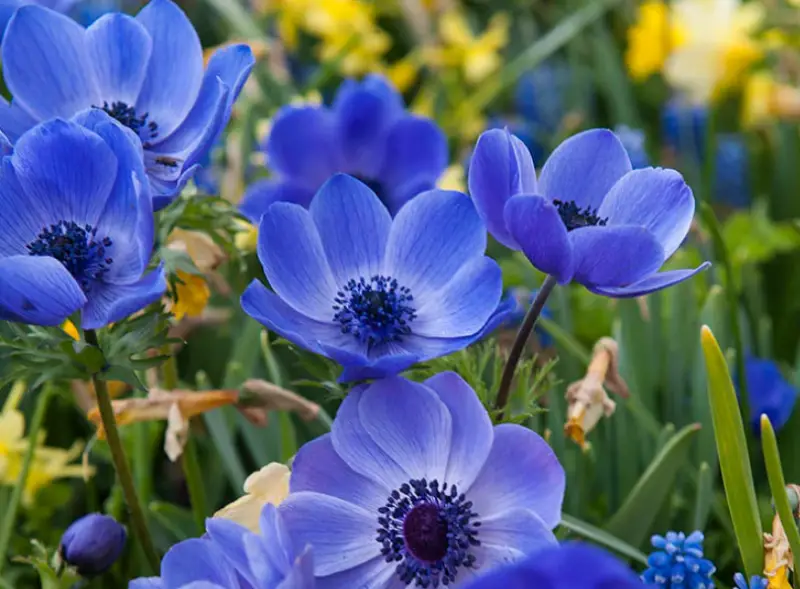
Poppy Anemone (Anemone coronaria) is a beloved flower available in various colors, including striking shades of blue. These charming blooms typically grow to a height of 10 to 16 inches and spread about 6 to 9 inches, making them a lovely addition to any flower bed.
Known for their graceful appearance and vibrant colors, Poppy Anemones are considered one of the best baby blue flowers you can grow, bringing beauty and elegance to your outdoor space throughout the blooming season.
Siberian Squill
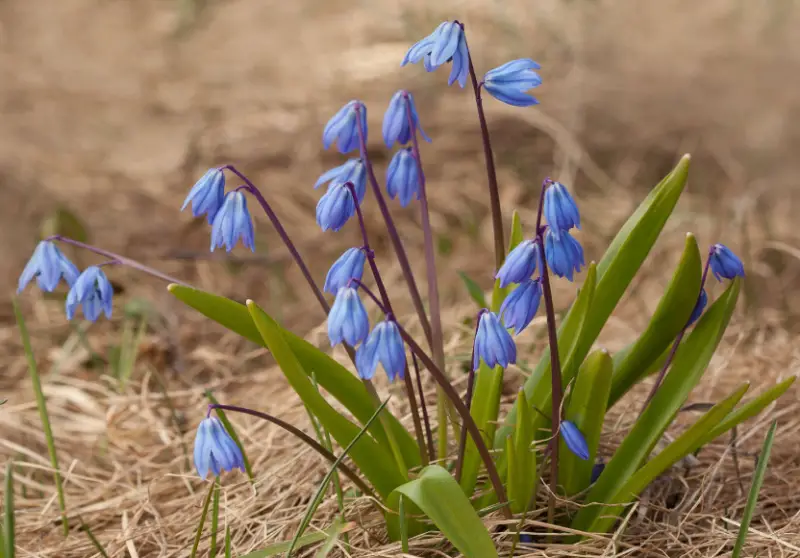
Siberian Squill (Scilla siberica) is a small plant known for its beautiful blue blooms that appear early in the season. These charming flowers thrive in full sun to partial shade. Siberian Squill is adaptable to different temperature conditions, making it a resilient choice for gardeners.
Its early blooms and ability to flourish in diverse environments make it a delightful addition to any landscape, providing a refreshing burst of blue as winter fades away.
Speedwell
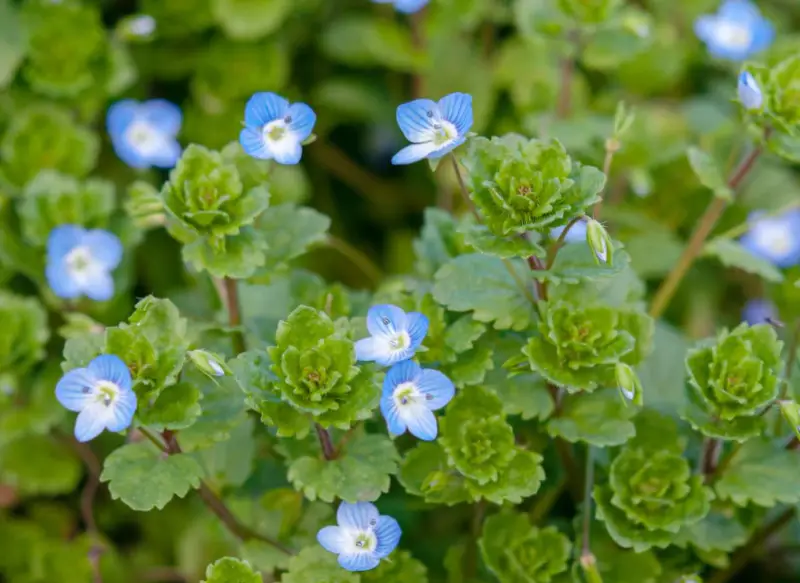
Speedwell (Veronica) is a flowering plant that showcases tall spires of blue flowers, along with other captivating colors. The height of the plant varies depending on the species, providing versatility for different garden designs. Known for its vibrant blooms and easy care, Speedwell is considered one of the best baby blue flowers you can grow.
Its striking floral display attracts pollinators and adds a charming touch to landscapes, making it a popular choice for both seasoned and novice gardeners.
Stiff Blue-Eyed Grass
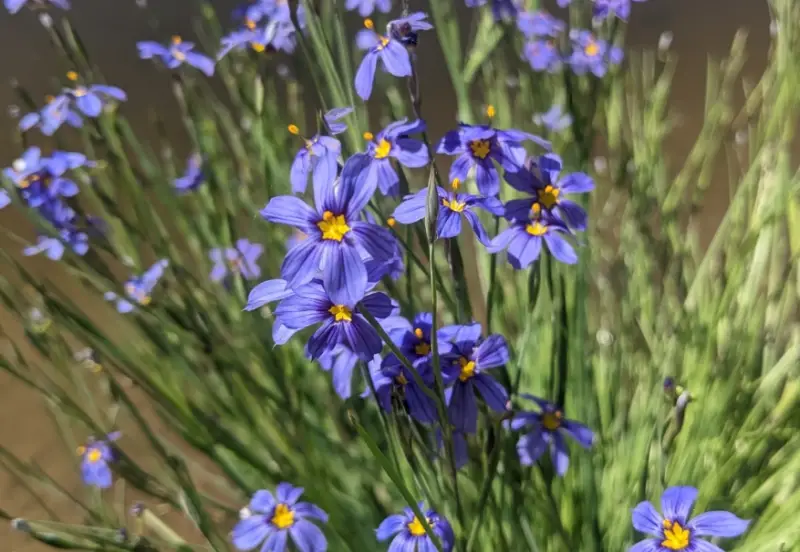
Stiff Blue-Eyed Grass (Sisyrinchium demissum) is a graceful perennial that features delicate blue flowers. This plant can grow up to 20 inches in height and spreads about 10 inches, making it a lovely choice for flower beds or borders.
It blooms wonderfully throughout the spring and summer seasons, creating a vibrant display of color. Stiff Blue-Eyed Grass is not only beautiful but also low-maintenance.
Tweedia
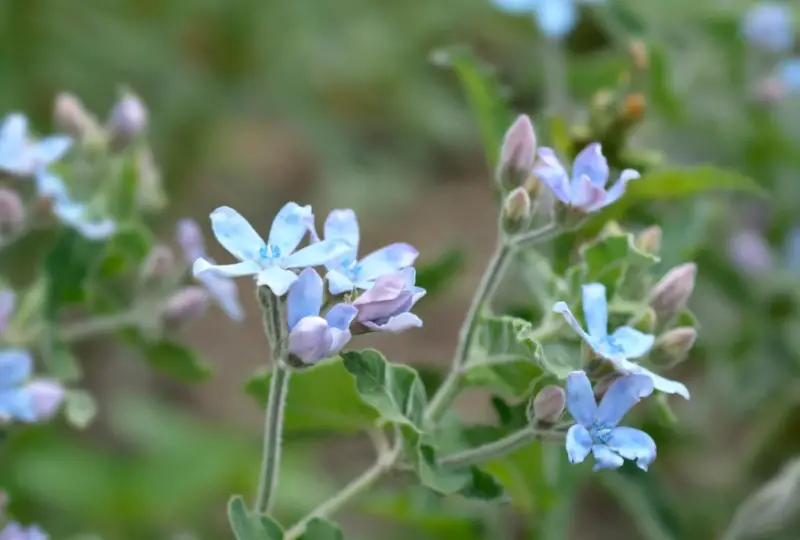
Tweedia (Oxypetalum coeruleum) is an evergreen plant renowned for its delicate light blue flowers. This plant thrives in full sun, although it can also tolerate partial shade depending on the climate. Its ability to adapt to different light conditions makes Tweedia a versatile choice for various landscapes.
As one of the best baby blue flowers you can grow, it adds both beauty and resilience, providing long-lasting color throughout the growing season.
Globe Thistle
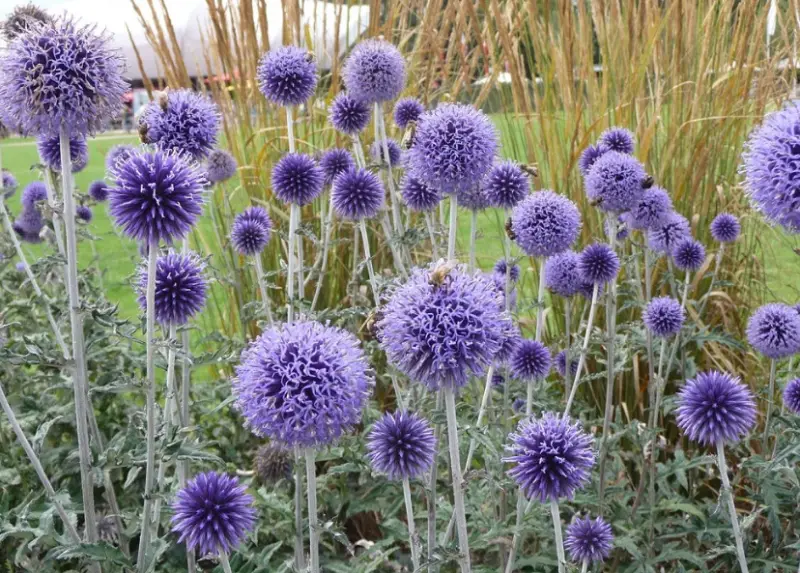
Globe Thistle (Echinops) is a fascinating plant to grow, featuring spiky foliage and captivating round flower heads in a stunning purple-blue hue. Its unique appearance adds texture and interest to your yard, making it an ideal choice for those looking for low-maintenance options.
Globe Thistle thrives in a variety of conditions, and its long-lasting blooms make it a standout feature in landscapes. Perfect for gardeners seeking both beauty and ease, this plant brings a bold, distinctive charm to outdoor spaces.
Lily of the Nile
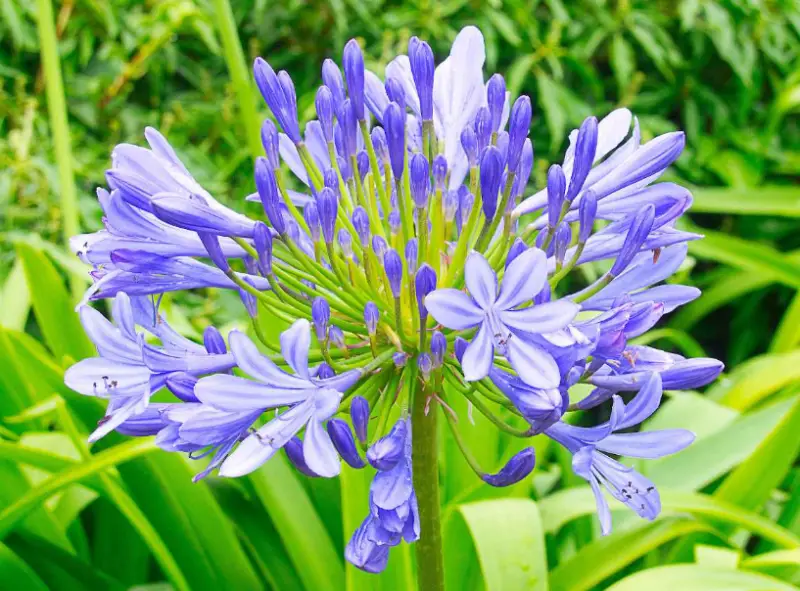
Lily of the Nile (Agapanthus africanus) is an alluring flower that showcases bright, eye-catching shades of blue to blue-purple. Thriving in sunlight, this plant requires 6 to 8 hours of direct exposure daily to flourish. Its striking blooms make it a beautiful addition to your landscapes, offering vibrant color throughout the summer.
As one of the best baby blue flowers you can grow, Lily of the Nile is perfect for gardeners looking to enhance their outdoor spaces with bold, long-lasting blooms.
Love-in-a-Mist
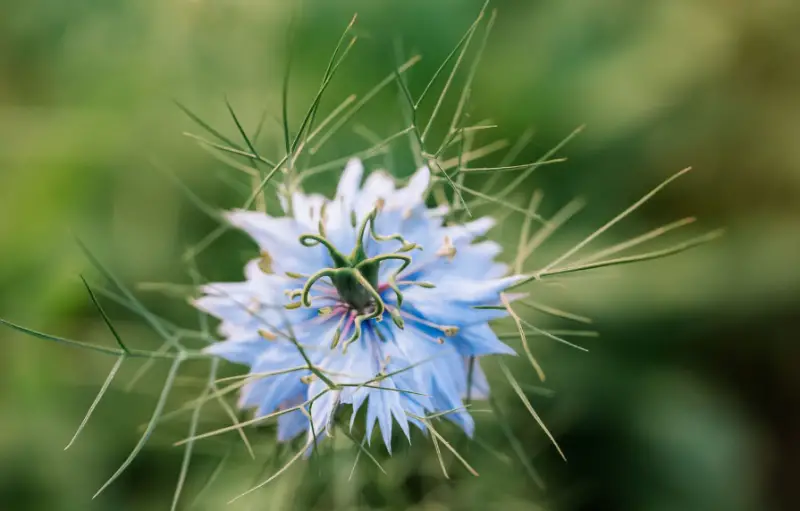
Love-in-a-Mist (Nigella damascena) is an exquisite annual plant known for its delicate, fluffy blue flowers nestled within a tangle of fine, airy foliage, giving the appearance of a misty cluster. Reaching heights of 8 to 20 inches and spreading 12 to 18 inches, this charming plant adds a whimsical touch to any outdoor space.
Its unique blooms and graceful form make Love-in-a-Mist a delightful addition to garden beds or borders, offering both beauty and texture.
Lungwort
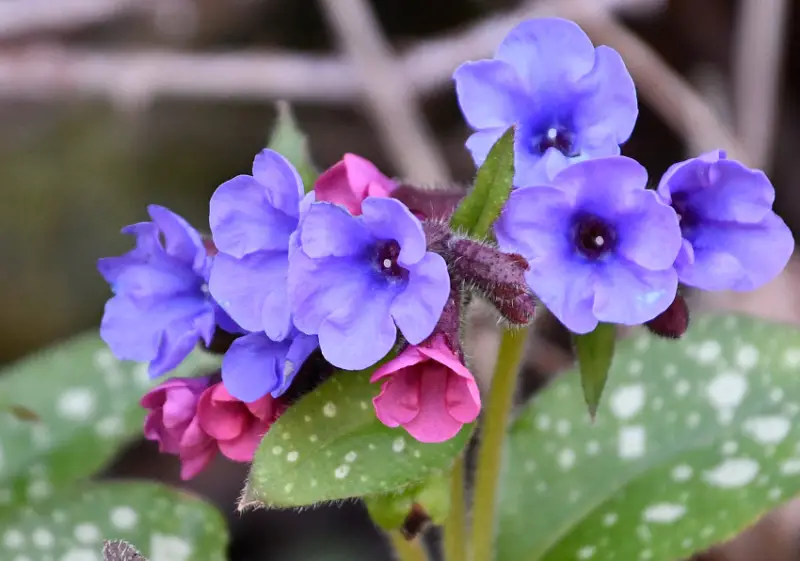
Lungwort (Pulmonaria officinalis) is an excellent choice for gardeners seeking delicate blue blossoms that bloom in early spring. This charming plant typically grows to a height of 6 to 12 inches and spreads across 12 to 18 inches, making it perfect for adding a splash of color to shaded areas.
Its early blooms and attractive foliage make Lungwort one of the best baby blue flowers you can grow, offering beauty and elegance to your garden while thriving in cooler conditions.
Periwinkle

Periwinkle (Catharanthus roseus), also known as Vinca minor, is an excellent evergreen ground cover with glossy dark green leaves. Depending on the cultivar, its charming flowers can appear in shades of purple, blue, or white.
Blooming typically in March or April, Periwinkle is a resilient and low-maintenance plant that thrives in a variety of conditions, making it a superb choice for covering large areas or adding texture to your garden.
Pincushion Flowers
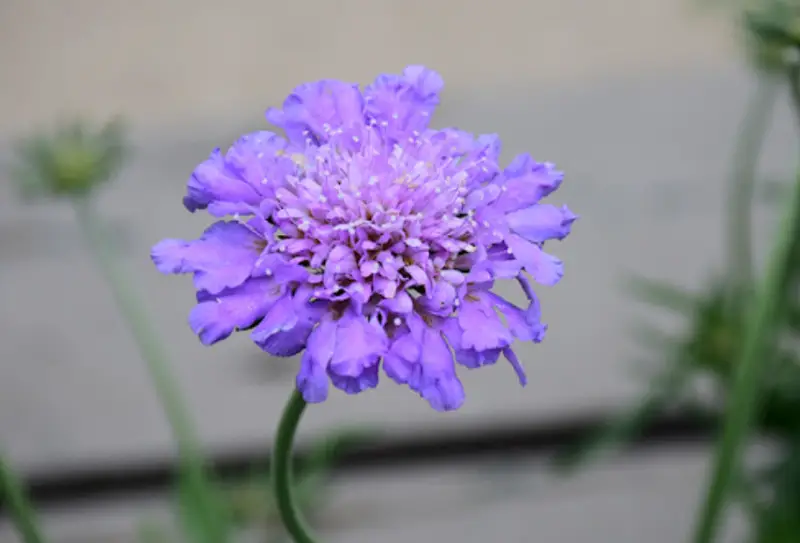
Pincushion Flowers (Scabiosa ‘Butterfly Blue’) are charming perennial plants that produce dense clusters of blue blossoms, offering continuous blooms from late spring until the first frost. Their unique flower shape and vibrant color make them a standout addition to various landscapes.
Known for attracting pollinators, Pincushion Flowers not only enhance the beauty of your outdoor space but also support local wildlife. As one of the best baby blue flowers you can grow, they provide long-lasting color and charm throughout the growing season.
Scarlet Pimpernel
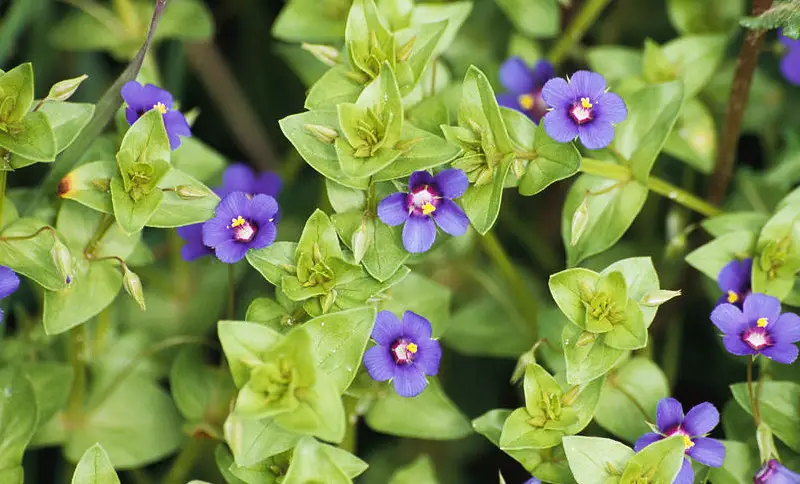
Scarlet Pimpernel (Anagallis arvensis), often referred to as the poor man’s weather glass, is an annual plant that showcases soft green leaves alongside vibrant blue flowers. This adaptable plant thrives in various soil types, provided it receives full sun, making it a versatile choice for different growing conditions.
Known for its charming appearance and resilience, Scarlet Pimpernel adds a lovely touch of color to your landscape while also serving as an indicator of changing weather.






